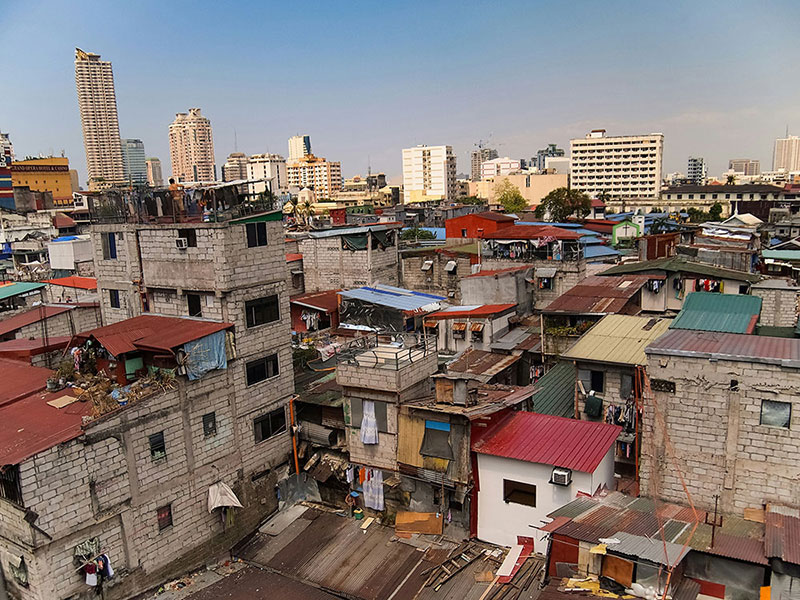
The Philippines, a country known for its vibrant culture and resilient people, faces a significant challenge in providing adequate housing for its urban poor. As the population continues to grow and urbanization accelerates, the demand for affordable housing has increased. Such a situation highlights both the challenges and opportunities within the real estate sector.
This article explores the complexities of urban poor housing in the Philippines. We have hope amidst the challenges and obstacles faced. There are encouraging opportunities and potential solutions that could pave the way for a more inclusive and sustainable future.
Table of Contents
The Urban Poor: A Growing Demographic
The urban poor in the Philippines represent a substantial portion of the population. According to the Philippine Statistics Authority, as of 2020, approximately 23.7% of the population lived below the poverty line. In urban areas, this translates to millions of families struggling to secure decent housing.
The housing crisis in Metro Manila and other major cities is a complex issue. This is further intensified by rapid urbanization and the resulting informal settlements. Over 4 million people in the region live in slums, with the population increasing by 3.5% annually.
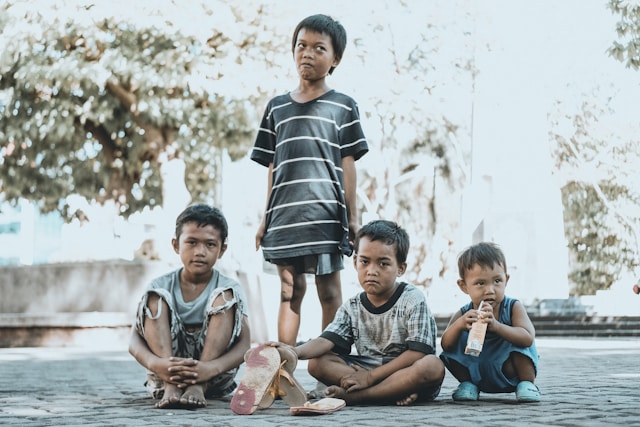
Efforts to address this include a resolution by Congress to speed up housing production and initiatives to decongest the city by encouraging residents to move to less populated areas. These measures aim to provide better living conditions and manage the urban sprawl that challenges the city’s infrastructure and resources.
Challenges in Urban Poor Housing
1. Land Scarcity and High Costs
One of the primary challenges in providing housing for the urban poor is the scarcity of land and the high cost of real estate. Urban areas are densely populated, and land prices have skyrocketed. This makes it difficult for low-income families to afford even the smallest plots of land. Thus, pushing them to settle in informal settlements where living conditions are often substandard.
In the bustling streets of Metro Manila, the contrast between towering skyscrapers and sprawling informal settlements paints a stark picture of urban housing inequality. The city’s rapid growth has led to a critical shortage of affordable land, driving real estate prices to prohibitive heights. For the urban poor, this means that the dream of owning a home is often just that—a dream.
The issue of land scarcity is not unique to the Philippines. It’s a global challenge that affects millions of people living in cities around the world. In developing countries, the situation is exacerbated by rapid urbanization, which strains already limited resources and infrastructure. The result is a growing number of families forced into substandard living conditions, with little hope for improvement.
2. Inadequate Infrastructure and Services
Informal settlements often lack basic infrastructure and services such as clean water, sanitation, electricity, and waste management. This not only affects the quality of life of the residents but also poses significant health risks. The lack of proper infrastructure is a major barrier to improving living conditions in these areas.
The challenge of improving living conditions in the urban poor areas is monumental. Overcoming this requires a concerted effort from various sectors. Recent dialogues and reports have highlighted the urgency of addressing these issues. For instance, the UN-Habitat Philippines Country Report 2023 points out that the growth of informal settlements, systemic inequity, and climate change are key factors contributing to the housing crisis.
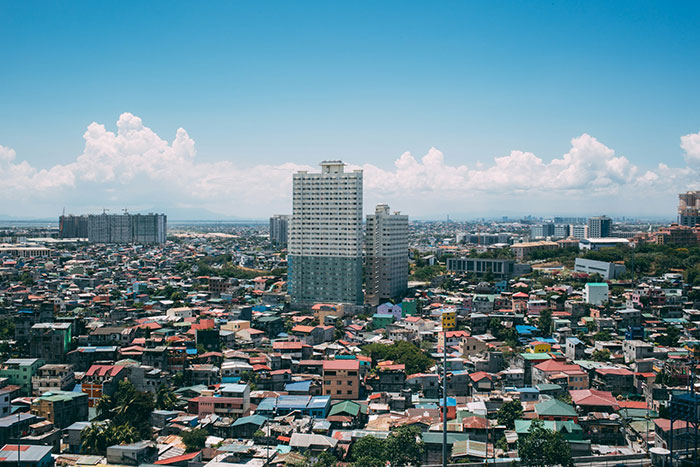
3. Legal and Regulatory Hurdles
The legal and regulatory framework surrounding land ownership and housing development in the Philippines is complex and often inaccessible to the urban poor. Many families living in informal settlements do not have legal titles to their land. As a result, this makes them vulnerable to eviction and displacement. Additionally, bureaucratic red tape and corruption can hinder the implementation of housing projects aimed at the urban poor.
4. Limited Financial Resources
Access to financing is another significant challenge. Low-income families often do not have the financial means to secure loans or mortgages. Also, there are limited affordable housing options available. Government housing programs and subsidies are insufficient to meet the growing demand, leaving many families without viable options.
Opportunities for Improvement
Despite these challenges, there are several opportunities to address the housing crisis for the urban poor in the Philippines. By leveraging innovative solutions and collaborative efforts, it is possible to create more inclusive and sustainable housing options.
1. Reforming Land Use Policies
Zoning regulations often limit the potential for affordable housing development. By revisiting these policies, cities can break down barriers and create opportunities for new housing projects.
2. Promoting Vertical Expansion and Co-Living Spaces
In areas where horizontal space is limited, building upwards offers a viable solution. High-density vertical housing can accommodate more people without requiring additional land.
Shared housing models can provide affordable living options for individuals and reduce the demand for separate housing units.
3. Public-Private Partnerships
Public-private partnerships (PPPs) can play a crucial role in addressing the housing needs of the urban poor. By combining resources and working together, the public and private sectors can help create housing projects for low-income families. These partnerships can also help streamline the regulatory process and reduce costs, making it easier to provide quality housing for low-income families.
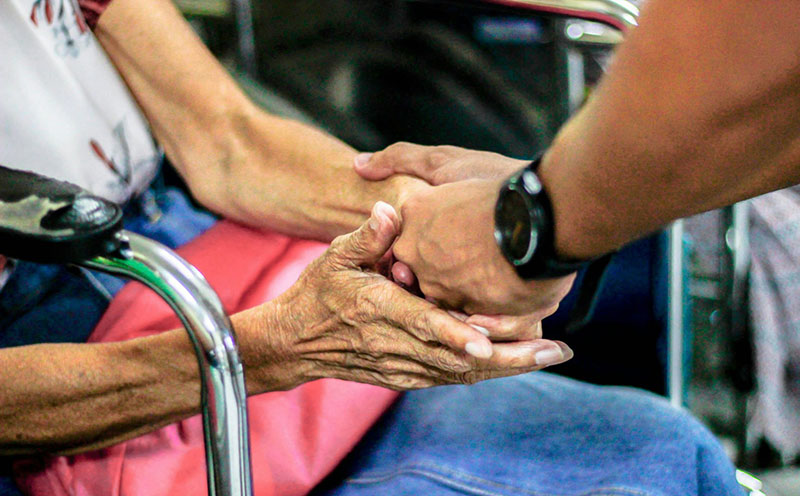
4. Community-Led Urban Poor Housing Initiatives
Empowering communities to take the lead in housing initiatives can yield positive results. Some community-led housing projects provide a way for residents to actively participate in the planning and development process. This can ensure that the housing solutions are tailored to their specific needs. This approach also fosters a sense of ownership and responsibility among the residents, leading to more sustainable and well-maintained communities.
5. Innovative Financing Solutions
Exploring innovative financing solutions can help bridge the gap between affordability and accessibility. Microfinance institutions, cooperatives, and social enterprises can provide low-interest loans and flexible payment schemes to low-income families. Additionally, government programs that offer subsidies and incentives for affordable housing development can attract more investment in this sector.
6. Utilizing Technology and Sustainable Practices
The integration of technology and sustainable practices in housing development is a forward-thinking approach. This addresses both environmental concerns and the pressing needs of urban populations.
Prefabricated materials and modular construction are not only cost-effective but also contribute to reducing the carbon footprint associated with traditional building methods. Moreover, green building practices like rainwater harvesting and solar energy installations are excellent examples of sustainable living. Such practices benefit residents by lowering utility costs and promoting energy independence.
These programs also contribute to the resilience of urban housing against climate change impacts. They are a smart investment for the future of urban development. Overall, such innovations in housing can lead to more sustainable, affordable, and livable cities for all.
Case Studies and Success Stories
Several successful housing projects in the Philippines serve as examples of how innovative approaches can address the housing needs of the urban poor.
One notable example is the “Bistekville” project in Quezon City, which provides affordable housing units to low-income families through a partnership between the local government and private developers. As a socialized housing project, it is often involving the beneficiaries in the construction process. This initiative not only offers shelter but also fosters a sense of community and belonging among residents.
Another example is the “Gawad Kalinga” initiative. Similarly, its approach goes beyond housing as it aims to build sustainable communities. Their comprehensive programs include education and livelihood opportunities providing holistic improvement in the quality of life for its beneficiaries.
These projects exemplify the positive impact of collaborative efforts between the government, private sector, and non-profit organizations in tackling poverty and homelessness. Through such partnerships, they demonstrate that with shared goals and resources, creating inclusive and supportive environments for the less fortunate is indeed possible.
Conclusion
The housing crisis for the urban poor in the Philippines is a multifaceted issue that requires a comprehensive and collaborative approach.
It is possible to create a more inclusive and equitable housing landscape with the following steps:
- Addressing the challenges of land scarcity, inadequate infrastructure, legal hurdles, and limited financial resources, and
- Build opportunities such as public-private partnerships, community-led initiatives, innovative financing, and sustainable practices.
The road to equitable urban housing is fraught with challenges, but it’s a journey worth taking. By exploring and implementing a combination of these strategies, cities can move closer to providing safe, affordable homes for all their residents. It’s not just about building houses—it’s about building communities and ensuring that everyone has a place to call home.
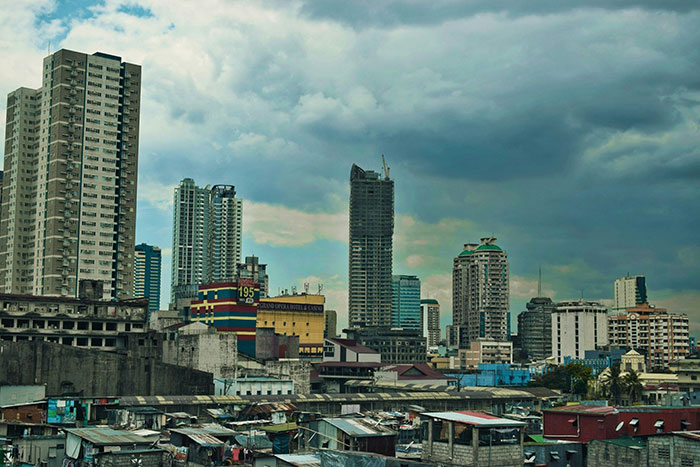
Good day! I want to know more about trash to cash.Can anyone help/assists me. We have a lot of crap…
So informative and interesting. I saw this lovely plant creeping over the fence of a nearby senior's garden. Sometimes, I…
I was convinced! Honestly, we have this beautiful thing growing right behind me while I'm reading this blog. I'm thinking…
Wonderful in the eyes and very relaxing relieve stressed to look at... Thanks fir the posr, looking forward to see…
Hello and Good Afternoon, My name is Marlon Johnson and I manage the affiliate program at Addiction Recovery Now. We…